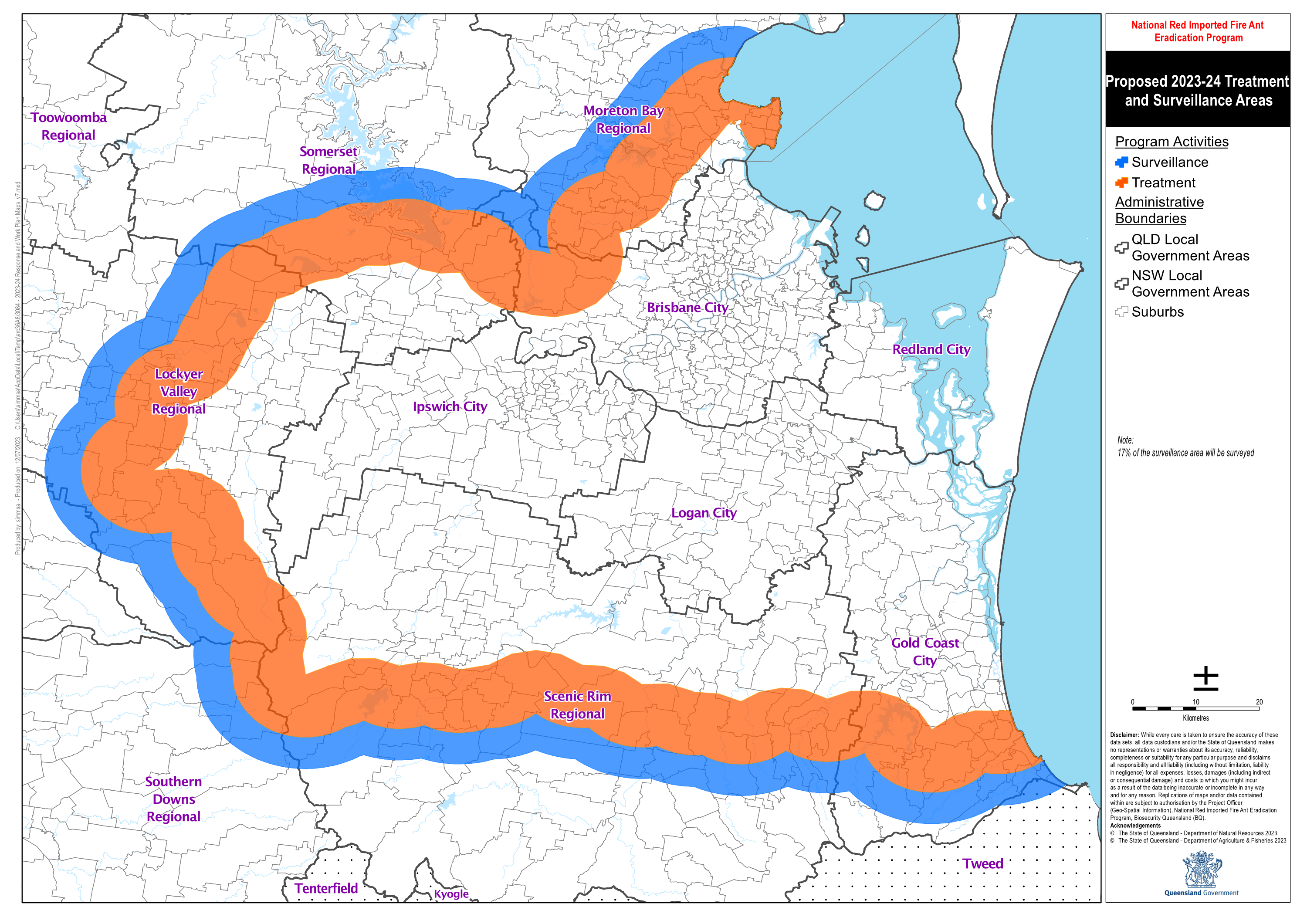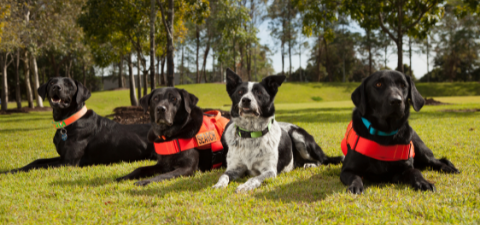Australia’s new Fire Ant Response Plan 2023–27 focuses on strengthening containment and compliance, and intensifying program-led and community treatment using a systematic, outside-in approach.
The plan is backed by our national cost-share partners and it aligns with the recommendations of the Strategic Program Review:
The plan builds on two decades of learning and our experience delivering the world’s most successful fire ant eradication program.
The full Fire Ant Response Plan 2023–24 is unable to be published as it is currently cabinet-in-confidence.
Our containment area wraps around the known fire ant infestation, spanning from Moreton Bay in the north, west to the Lockyer Valley, east to the Gold Coast, and south to the Tweed Shire.
View and download the response plan map (PDF, 1.42MB)
The map provides a visual representation of our strategic approach. This area will gradually reduce in size as treatment progresses inwards and areas move towards declaring freedom from fire ants.
We will also work alongside Queensland's dedicated Fire Ant Suppression Taskforce (FAST) to equip local, state and federal government departments and agencies, and industry and residents in areas awaiting planned treatment, with the skills and knowledge to self-manage fire ants on land they own or manage.
100% coverage of targeted areas
Eradication activities will reach 100% of all targeted properties whether fire ants are visible or not. Fire ant eradication comprises of:
- containment—extensive surveillance activities on targeted properties around the fringe of the infestation
- treatment—broadscale treatment on targeted properties in the eradication area.
This includes up to 6 rounds of broadscale treatment over 2 years, followed by 5 years of intensive surveillance—each using aerial and ground methods.
Prioritising detections
Fire ant detections found within our containment and treatment bands, or outside the infestation boundary, are our priority. We also prioritise detections that risk public safety – schools, childcare centres, parks and sporting fields.
Any outbreaks found beyond the containment boundary will be treated as an emergency response and will receive eradication treatment.
Shared responsibility
The community , industry and all levels of government must play an active role in the fight against fire ants. It is the only way to eradicate this pest and protect Australia from the devastating impacts they can have on our environment, economy, human health and outdoor way of life.
This will include:
- Looking for and reporting fire ants
- Letting our teams in so they can conduct eradication activities
- Checking the fire ant biosecurity zones and following associated movement controls
- Treating fire ants on the land they own or manage
These combined efforts will give us the best and only chance of a future free of fire ants.



